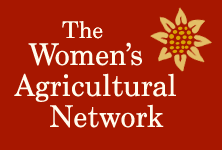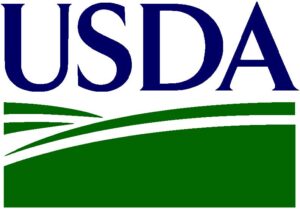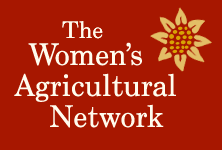Run Date: 11/11/07
By Melinda Tuhus
WeNews correspondent
Female farmers are seeking advice from an agricultural organization that helps them succeed in a male-dominated field. One woman who was told she couldn’t do it 30 years ago is plucking her Thanksgiving turkeys.
Scout Proft
EAST DORSET, Vt. (WOMENSENEWS)–As Thanksgiving approaches, Scout Proft is preparing to market turkeys delivered as poults to the farm in July.
She says she and her husband Matt usually kill and sell about 650 turkeys in November after they spend the summer on the Profts’ mountaintop farm reaching their full weight of 16 to 18 pounds.

“We process them all in one day, and weigh and bag them the next day and put them in a walk-in cooler,” she says. “We want to do it as humanely and cleanly as possible and get the very best product to our customers.”
It’s a communal endeavor, she says, almost like a barn-raising. “We have a lot of friends come and bring food and we put on the music. We have more people wanting to do it than we have stations. Everybody becomes an expert at their station.”
The process includes killing the birds by hanging them upside down in stainless steel cones and cutting their jugular veins, then sending them through an electric scalder followed by a motorized plucker.
Almost 30 years ago, Proft began building her farm on a small piece of the 120 acres her family has owned for generations near the top of mountain in southwestern Vermont.
In 1978, she contacted the state Agricultural Extension Service–which gives technical assistance to farmers and livestock producers–to ask someone to look at the land and give her advice on farming it.
“And so this guy came up and said, ‘Well, Scout, you can’t do it. This doesn’t look like a farm, and besides, you’re a woman,'” Proft recalled. “And out the door he walked. Well, that just gave me impetus.”
Clearing Land, Growing Organic
Proft started clearing land, and when she later married, the couple established an organic, diversified farming operation on just a few acres. They now have five children, ages 9 to 20, who have been home-schooled and who work on the farm.
Proft plans to sell the family’s organically fed birds locally for just under $3 a pound.
And though that is a lot pricier than the 89 cents to $1.29 a pound consumers pay for their heavy-breasted kin raised in industrial facilities and fed grain laced with antibiotics, Proft says, “Ninety-nine percent of our customers come back year after year because of taste.”
Besides turkeys, the Profts raise hundreds of chickens, ducks and geese; produce honey; and grow vegetables, herbs and flowers. The farm is their only source of income, which allows them to just “squeak by” financially, Proft says with a laugh.
Proft laments that no one gave her any encouragement when she started out, which is one of the reasons she values the Women’s Agricultural Network.
She says it was “a great honor” to be invited in 1994 to be a founding board member of the group based in Berlin, Vt., that now provides the kind of technical advice and encouragement to women that Proft wished she’d gotten years ago.
“It’s been fantastic. They’ve really provided women of all ages with support and research and workshops on how to do agriculture on a very small scale all the way up to a very large scale, and empowered them, really.”
She adds that the group has also helped her with long-term planning, “how big to become, how diverse, and which markets to pursue.”
A July meeting of the group’s Connecticut branch drew in a woman who sells blueberries from her 3,000 bushes and another who raises goats and makes cheese.
Responding to Unmet Need
Mary Peabody, a community economic development specialist with the University of Vermont Extension Service, started the network in 1994 with a small grant from the U.S. Department of Agriculture. She saw an unmet need among the farm women she came into contact with.
“When I went to farm meetings and workshops, a lot of men would come, and a few women,” she says, “but they tended not to ask a lot of questions. But when I went to visit farms, I found the women very engaged in operating the farm and they had lots of questions. So I could take away from that that women weren’t getting all the education and technical assistance that they really needed and wanted.”
Since its founding, the network has grown to about 5,000 members, centered in the Northeast but with contacts in every state, as well as in Canada and Mexico.
In many parts of the world, agriculture is dominated by women. Although that’s not true in the United Sates, the numbers are growing. U.S. Department of Agriculture data show 237,819 women are principal operators of farms, and 1,000 of them are in Vermont.
Nationally the number of female farmers increased 13.5 percent between 1997 and 2002. The next figures will be released in 2008.
Farming for Business and Family
Peabody says about half of the network’s members work their farms as single women or as women whose domestic partners are not involved in the business. Another third farm with partners and make decisions together, like Proft and her husband. A smaller number are what Peabody calls traditional farm wives.
“They’re involved in some aspect of the operation but are not the primary decision-maker. And the reason they get involved with us is that they can see down the road where they may very well inherit this farm and they want some counseling and some education around what their choices would be at that point.”
Peabody adds, “In our 10 years we’ve helped improve the financial viability of just over 500 farm businesses, and helped another 600 farms make informed decisions about their business, ranging from whether to start one, to diversify, or get out of business.”
Peabody says the network defines farming very broadly to encompass any business that includes food or fiber or natural resource use.
She says many women who want to farm did not grow up farming, so they often don’t know about resources and networks that are available to them. Also, most women have smaller body frames and less upper body strength than men, so finding tools that fit them and learning how to use them without causing physical injury is a challenge.
In addition to farmers, the network serves women in related markets.
Jane Maher, for instance, joined the network earlier this year. She owns Snooty Foods in Oxford, Conn., which produces a variety of organic dips and spreads, which she sells as far away as Boston.
“I started my business in 2004,” she says, “with one product: my garlic herb butter. It’s something I’d always made for my family and people loved it.”
She says the network offers “a way to stay connected with women who are going the same direction I am, and to keep up with what’s going on with legislation at the state and national levels that promotes local and sustainable agriculture.”
Melinda Tuhus is an independent journalist in Hamden, Conn. She writes often about food issues.
For more information:
Women’s Agricultural Network:
http://www.uvm.edu/~wagn/
USDA Farm Service Agency, Women Outreach Program:
http://www.fsa.usda.gov/FSA/webapp?area=home&subject=oued&topic=ops-wn
Women’s Agricultural Community:
http://www.safs.msu.edu/womenag/aboutus/us.htm
Organic Farmer Plucks Her Thanksgiving Turkeys
This entry was posted in Uncategorized. Bookmark the permalink.






